REVIEW – Crossfire DG-8 SF
ITEM: DG-8 SF Pack
MANUFACTURER: Crossfire
DESCRIPTION:
Long Range variant of the Crossfire DG series. An internal framed, expeditionary sized pack. Straight out of the box, this pack is capable of carrying a whopping 133L+, including all external pouches.
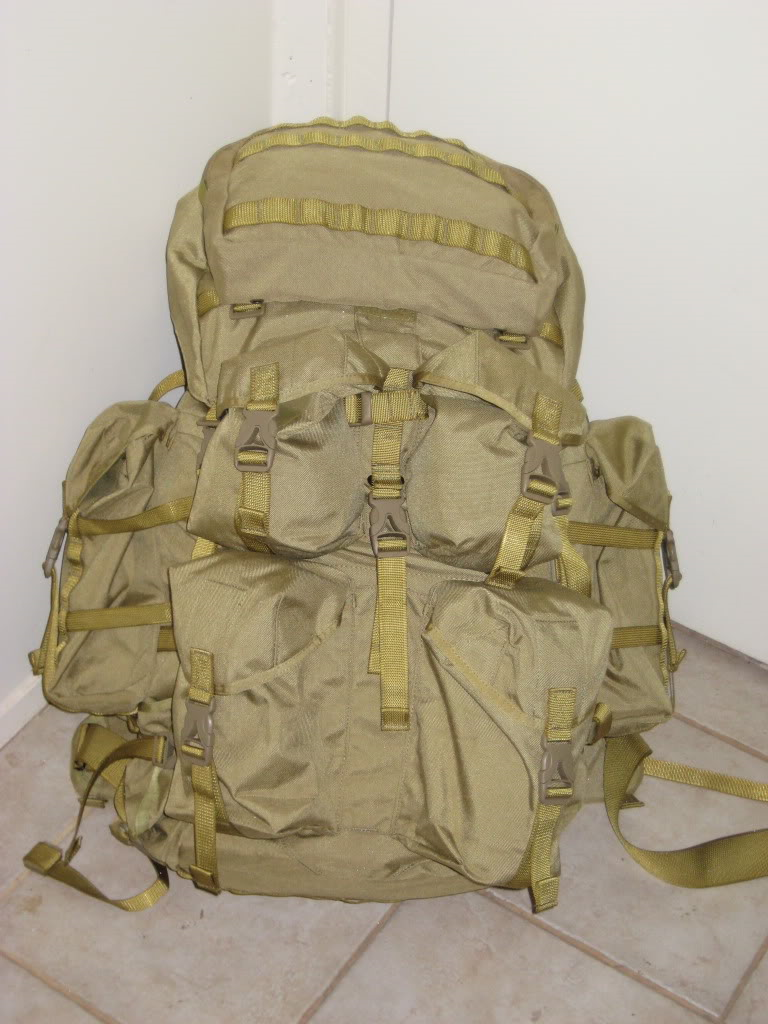
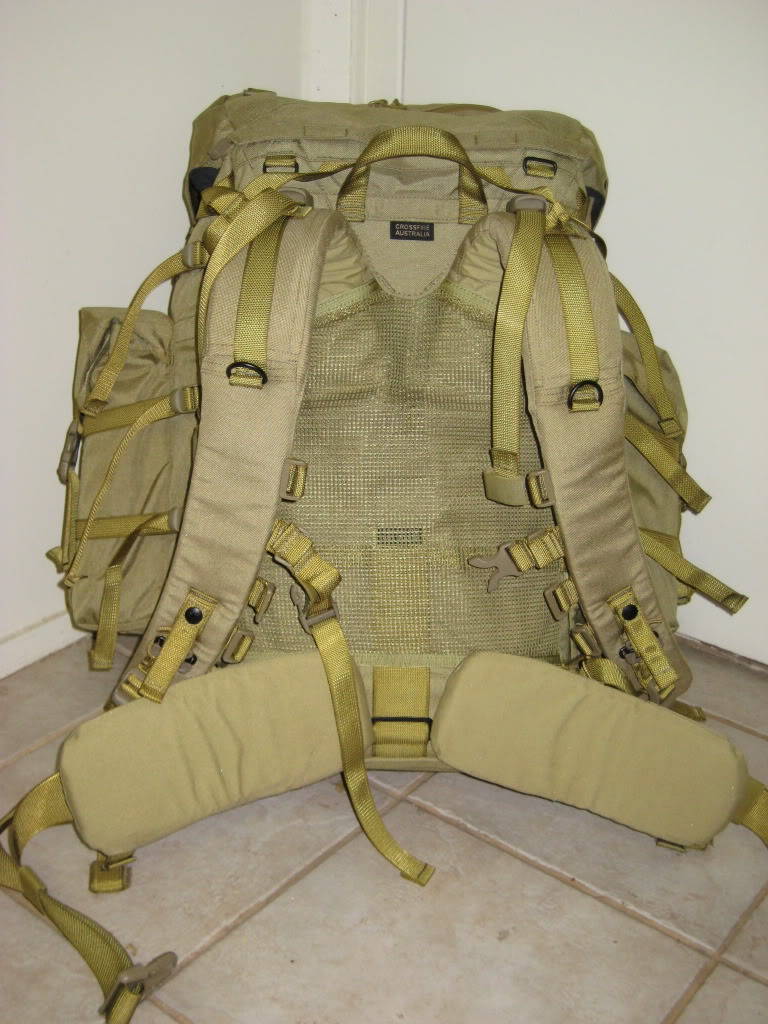
Dimensions are 76cm high, 41cm wide (another 21cm for external pockets), 22cm thick
Capacity, main compartment is 110L (to the shoulder line, capable of more) and 133L including external pouches.
In simple terms, the DG-8 is intended as the bigger brother to the DG-3. Please refer to my review of the DG-3 HERE.
DG-3 to the left, DG-8 to the right.
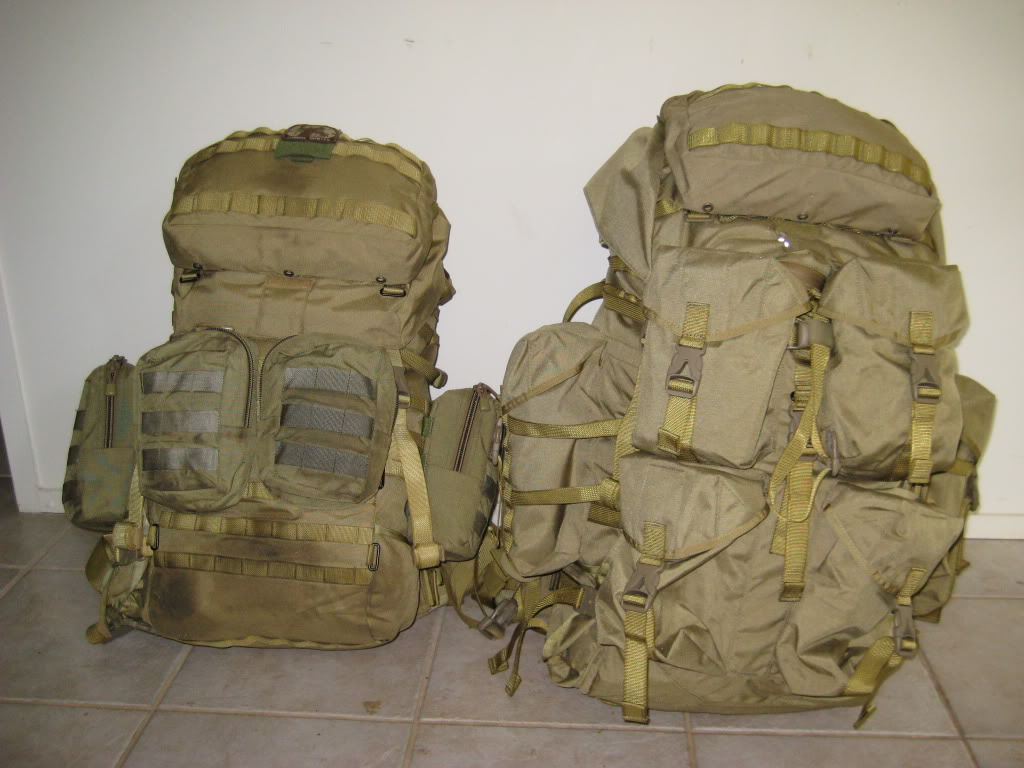
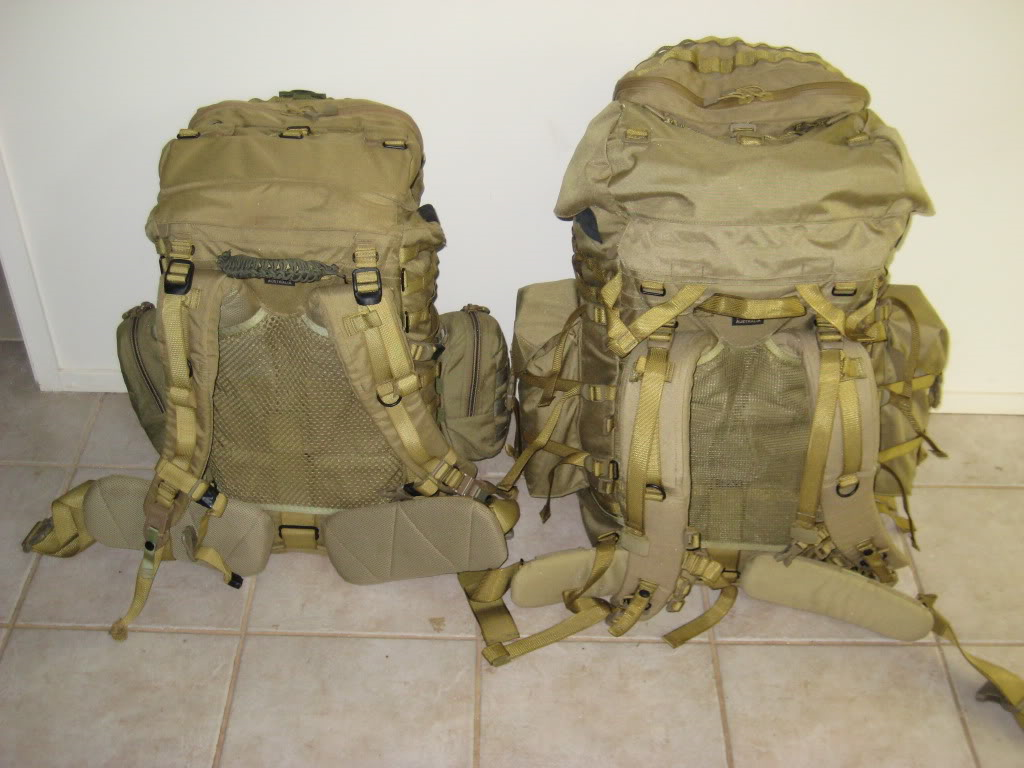
Compared to the industry standard ATS Raid pack:

MATERIALS:
Same as it’s little brother, the DG-3. 1000D cordura. Available in Coyote Tan and DPCU (Auscam).
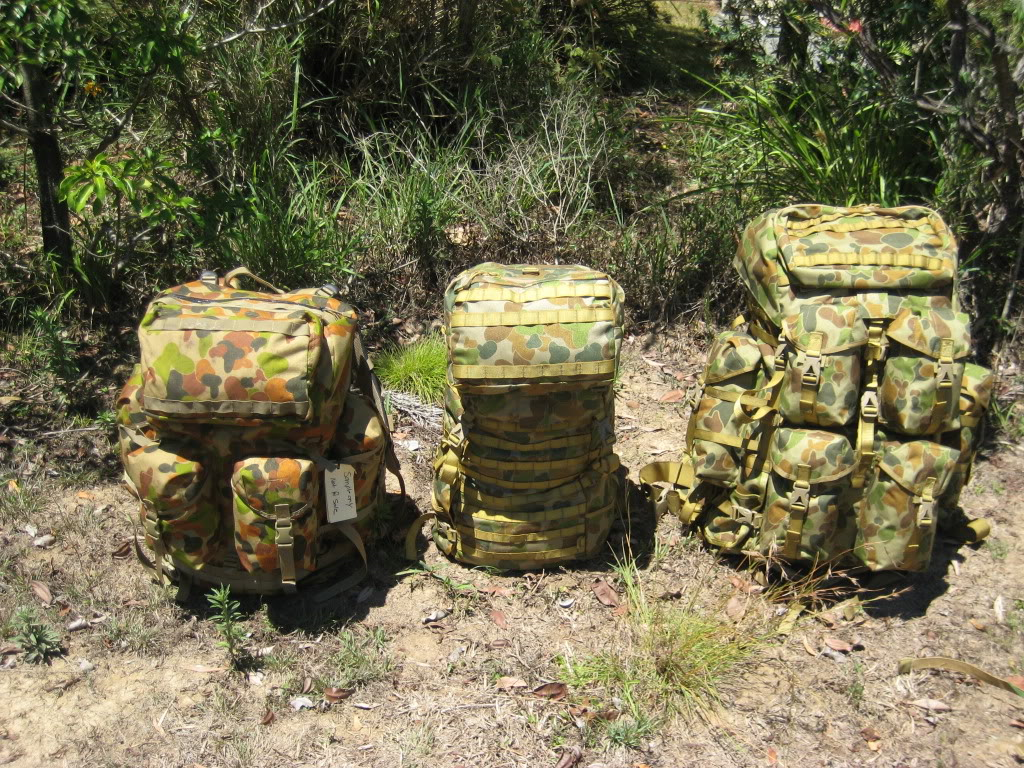
HARNESS –
Similar to the DG-3, with a slightly different liner material instead of the free-2-air mesh. The liner looks and feels like canvas. If it walks like a duck, quacks like a duck…
Fabric loops are fitted to allow securing of hydration bladder hoses, steel loops are fitted to allow radio handsets to be secured. Back length adjustment is easily accessed and adjusted. The whole back is covered with a mesh back to allow moisture wicking.
A load bearing hip belt is also fitted. Interesting design feature of this hip belt is that it is comprised of two hinged swinging arms which are also seen on the DG-3 and many Wilderness Equipment hiking packs (such as the Jagungal and Freycinet). These swing arms allow for different body shapes, extreme body movement when moving through the scrub and can be folded up out of the way during transport. To better accommodate CBA usage whilst also being able to wear the pack at the same time, the hip belt padding is secured with velcro can be removed.
Slight change from the DG-3 harness is the sternum strap. On the DG-3, the sternum strap is an adjustable configuration that is attached to the harness straps by a length of webbing running the length of the useable harness area, allowing the sternum strap to be adjusted to suit the load and terrain conditions.
Since the DG-8 is capable of carrying so much more weight, the sternum strap is secured via permanently attached loops to the harness (please refer to photo). Due to the weight intended to be carried, the more comfortable and adjustable DG-3 sternum strap would not be suitable for this application.
Hence, due to the projected weight, the harness compromises comfort level for strength. I personally found the sternum strap arrangement annoying. I suppose one could set up the sternum strap one set of buckles and cut the rest off, but this would compromise the ability to adapt the pack harness for differing loads, balance points and terrain.
The second difference from the DG-3 harness is the addition of webbing loops at the top corners of the harness. It seems that these are extra handles to aid in the maneuvering of the pack from vehicles, within a hide and other activities to reduce the chance of ripping off gear from the pack and damaging it.
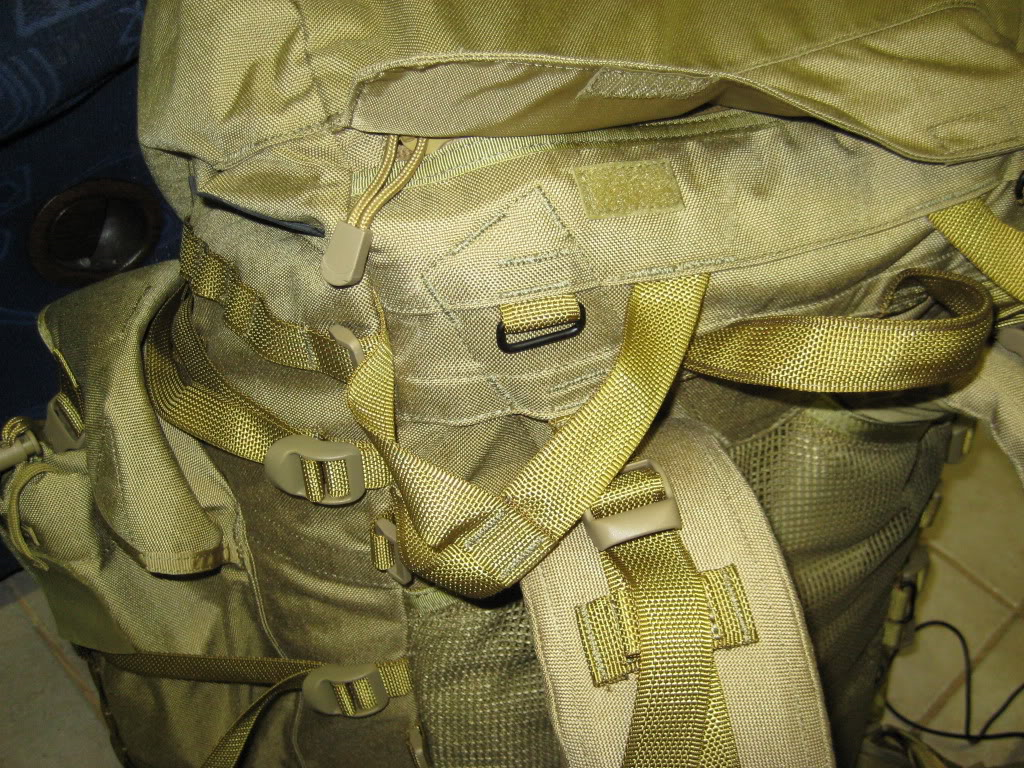
FRAME –
Similar to the DG-3, if not the same as far as I can determine.
RUCK –
Scaled up from the DG-3 to a huge 110L capacity accessible via top loading opening and a separate sleeping bag tunnel at the bottom of the pack. The sleeping bag tunnel that can be accessed without having to open the main ruck.
It should be noted however that the MOLLE channels that cover the outside of the -3 have largely been removed and replaced with 6 external pockets. There are 2 on the sides (1 per side, through which long items can be passed through the back of them), and 4 on the back of the ruck.
Each pocket is secured by fastex clip, barrel-locked cordage and velcro. Each pouch also has drainage grommets. Very secure methods of closure, and can be customised to suit the load or paranoia level. As per usual for Crossfire, all buckles are field replaceable. Spares are provided with the pack.
Buckles used on the pack are the new standard from Crossfire, and they seem to be very “pliable” under use. This pliability seems to resist breakage from crush and other field abuse.
It’s very reminiscent of the pouch layout of the DG-6, just scaled up for a larger load.
On the sides, the pouches are capable of carrying objects 1.5 times larger than a 1L Nalgene bottle.
On the back, the lower pockets are slightly smaller, but still capable of holding a Nalgene bottle each. The top pouches are smaller again.
Above all these pouches is a small zip secured area that can hold a hootchie/poncho/basha shelter sheet, or be used to hold maps and other documents.
There’s also a small pocket to stow an E-tool. Both Australian fixed handle and American folding handle E-tools can be carried with ease.
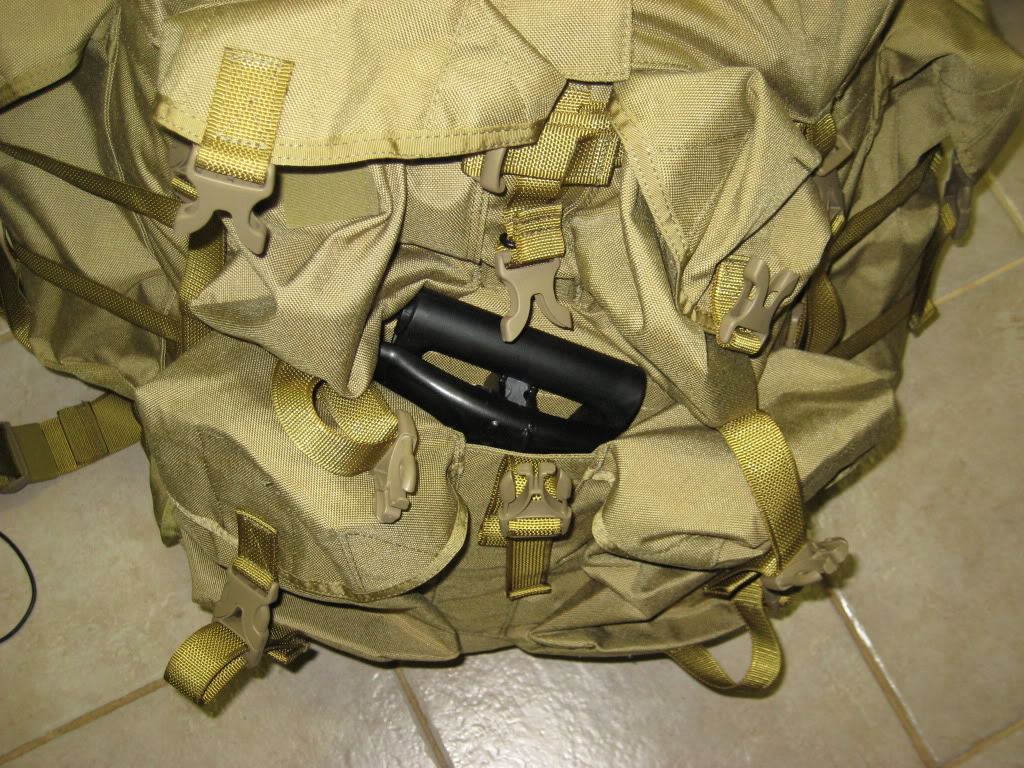
The main rucksack compartment is sealed with a roll-top closure, like a dry bag. Internally are several mesh pockets (Crossfire standard) in the main rucksack useful for organising personal kit. There is a zipped shelf above the sleeping bag tunnel if compartments within the pack are required. Even while zipped up, the shelf has gaps for long objects like radio antennae, aiming stakes, and other long awkward objects. To this end, there’s a bucket at the bottom of the pack to catch and retain these long items.
The lid is the same as the DG-3, with MOLLE PALS loops, where the Crossfire Claymore pouch is currently located on mine. Under the lid is a zip access pocket, fitted with a mesh pocket to further organise small items. On the top of the lid are several ports for radio antennae to be stuck through, and a zip to access the radio control panel. Each side of the main rucksack also has water resistant ports for hydration hoses or radio handsets. One could conceivably have hydration bladder hose out of one side, and radio handset from the other.
There are also compression straps to bring the load closer to the back if the rucksack is not fully loaded. The compression straps also allow long items like M72 LAAW’s to be attached to the pack for ease of access and storage.
One thing I did notice about the compression straps on the DG-8, compared to its smaller brothers the DG-6. There’s a daisy chain of webbing (think a single row of PALS loops) running down the length of the side pouches, and the compression straps are fed through this daisy-chain. This works much better than the compression straps on the DG-6 since they don’t interfere with the pouch opening, and also aid in stabilising the load within the pouches and the whole load in the ruck. Damn nice idea, the only downside I can see is an increase in snag points in thick terrain.
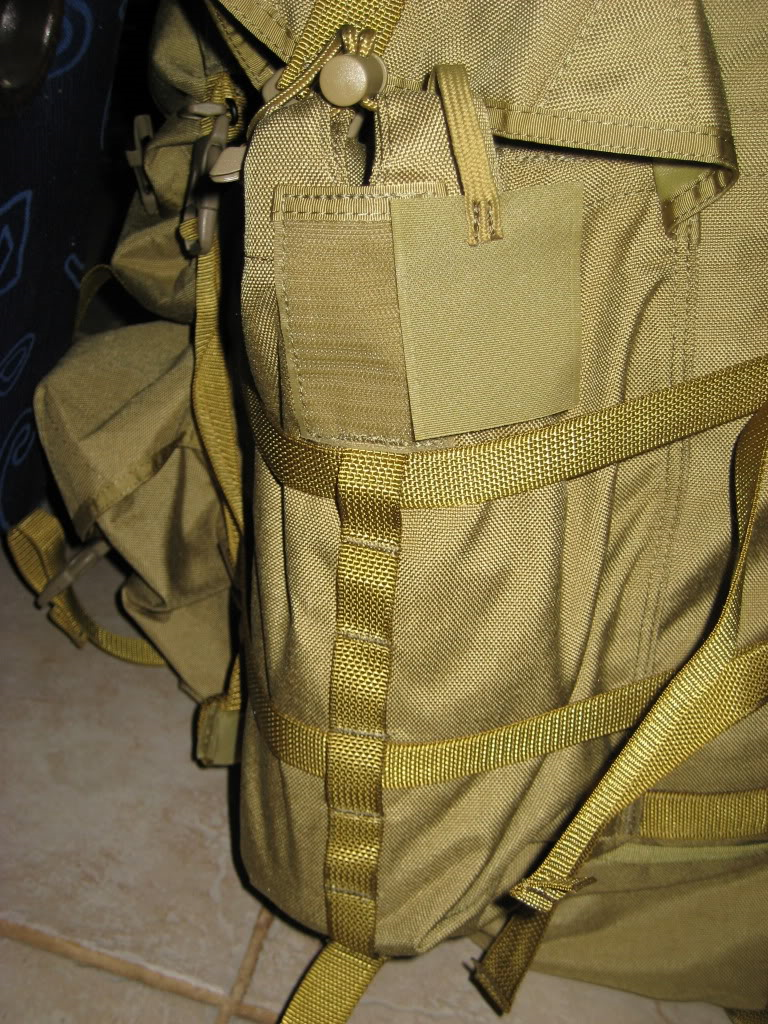
Alongside the compression straps are plastic loops to allow more kit to be stowed externally if necessary. To be honest though, with the huge internal volume of this ruck, I can’t think of too many items that would need to be lashed to the outside of the pack.
ACCESSORIES:
A dry-bag specially sized to fit the main compartment is supplied as standard, it’s bloody huge. In addition, a radio harness/bucket (which allows rapid dismount of the radio) and hydration bladder sleeve is also supplied, just like it’s smaller brother, the DG-3.
The pack also comes with some simple, but quite in-depth instructions.
PERSONAL ASSESSMENT:
PROS –
The DG-8 is designed and built to Crossfire’s usual high standards. It’s bombproof, and will probably outlast most users.
It’s design is not as flexible but should be useful for that small portion of the population who would actually use this pack to its full capacity in its intended use.
CONS –
Let’s be painfully honest, whilst I really like Crossfire products, I’m way outside the intended end-user of this pack. I’m really only a hobbyist nowadays, with some infantry/recon/hiking experience.
Also being painfully honest, let’s face the reality that this pack is intended for a very small and specific end-user community.
The intended end-user of the DG-8 is probably executing the sort of missions where long periods in very cold mountains are envisaged, carrying fairly light, but very bulky cold weather clothing away from logistical support. The DG-8 is intended as an “Expeditionary” type pack as it’s called in the civvy bushwalking circles. It is NOT intended as a general purpose combat pack like the DG-3. With my experience of walking the Overland Track with it snowing on me, with a DG-6 carrying 10 days of rations and a tent, let me reiterate there is a very narrow group who would actually need this pack.
Because of its huge capacity, I think there’s way too much likelihood of the average bloke overloading the pack with far too much useless crap and then injuring themselves. Quite honestly, I put the contents of my DG-3 AND DG-6 into the DG-8. That’s over 50kg’s of gear, and not even filling the main rucksack. Both of my packs are always loaded with kit, food and water to sustain me for 7 days in very rough terrain and weather. So this means 14 days of food, water and a double load of cooking equipment, clothing and other odds and sods were swallowed up by this cavernous pack. It still had room left over. I was actually scared to see something like that happen. I’m just glad I didn’t have to carry the damn thing for any great length of time nowadays.
I know I’ve heard and seen some leaders in the past develop a real gleam in their eyes when they realise the troops have some spare capacity in their pack. The DG-8 is not the pack to carry when people like this are gathering around like vultures.
In addition, due to the size of the pack, and the placement of the external pouches, modularity with MOLLE pouches is removed. I personally find the modularity of the DG-3 to be outstanding for a wide variety of mission profiles. In addition, the modular pouches aid greatly in balancing a load properly, by being able to adjust the individual placement of pouches. By losing this capability, the DG-8 loses a lot of flexibility inherent in its smaller family member.
SUMMARY:
As previously mentioned, the DG-8 is a specialist pack, well up to Crossfire’s usual, excellent standard.
It’s not intended as a general purpose combat pack, and should not be considered as such.
To be quite honest, most people I’ve spoken with who reckon they need one, would be better served by a DG-3 pouched out and properly setup.
Disclosure: This item was kindly supplied by Military Gear (go see their website in my links section) who has been a staunch supporter of the Fire Support Base forum for a long time. If you’re interested in these items, go and see a fellow member who will look after you.
The pack will be returned after the review, after all, I need another pack (especially of this size) like a bloody hole in the head.

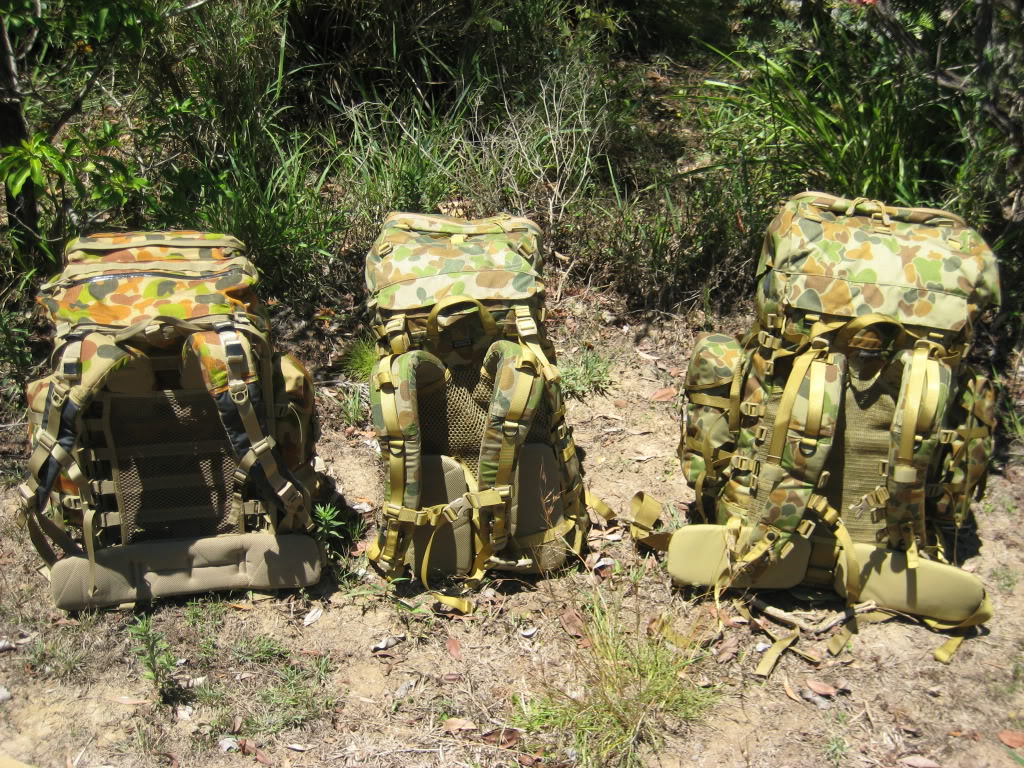
Posted in Crossfire, Long Range, Military, Packs & Webbing by 22F with 2 comments.
Leave a Reply